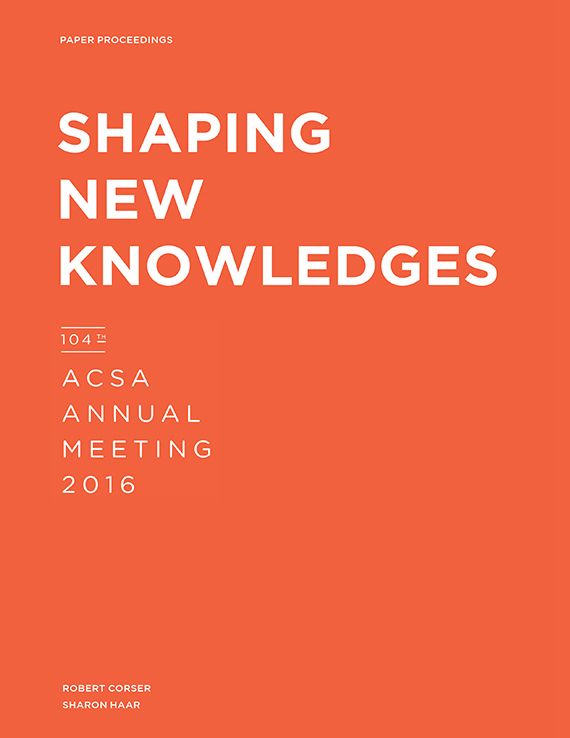Author(s): Philip Speranza
The way urban inhabitants experience the processes of the city has changed. Each day moredevices from the Internet of Things, IoT, (Weiser 1991) pervade the way we perceive the cityas an assembly of related urban processes (DeLanda 2006) rather than solely as a collectionof fixed physical infrastructure. How and what designers identify as urban problems, createnew datasets, understand and integrate measurements of the urban environment withdesign has changed given the everyday non-human and human interaction of a next generationof designers. Smartphones provide portals to record in-situ perception of the siteand the subsequent integration of that information is now possible via parametric geospatialinformation systems, GIS. Pins are dropped in Google Maps and datasets may be interactedwith, quickly entering workflows to 3D spatial analysis tools. The selection and creationof new ‘data from scratch’ (Nabien, Ratti, et al 2013), integration and analysis of informationmay then indirectly or directly inform design processes and how design proposals may‘attach’ themselves to the site (Latour et al 2005), entering into the new urban assembly thatis experienced by the public over time. The question of ‘how’ is thus closely related to ‘what’types of urban processes define each designers perception of urban condition including therelevance of the relationships of small-scale social phenomena.
Volume Editors
Robert Corser & Sharon Haar
ISBN
978-1-944214-03-6

 Study Architecture
Study Architecture  ProPEL
ProPEL 
